Combat aircraft. Morane-Saulnier: are they as good as they say?
First, a short excursion into history, just pay tribute to, because the "Moran-Sun" has long ceased to exist. But since the contribution made to the story aviationquite large, remember. Why not?
The Moran-Solnez company was originally founded under the name Societe Anonyme des Aeroplanes Morane-Saulnier 10 on October 1911 by the brothers Leon and Robert Moran and their friend Raymond Solne.
Later the name was reduced to the usual "Moran-Sun"
The aircraft of the company took an active part in the battles of the First World War. Naturally, on the side of the Entente.
And in 1914, Robert Solnez entered the history of aviation as the first machine gun with a synchronizer to be installed on the aircraft. The planes were Morane-Saulnier G models, the machine gun was Hotchkiss caliber 7,9 mm. And so, in fact, it all began.
During the existence of Moran-Solne, engineers and designers of the company developed more than a hundred aircraft, including our hero, the MS.406 fighter, which was most often encountered in the French Air Force until the defeat of France in World War II.
In May 1965, after the nationalization of the aviation industry in France, the mention of the Moranes and the Sun completely disappeared from its name, and the company became known as Socata.
Now about the fighters.
Morane-Saulnier MS.405, 1935 year
The story begins in the mid-30 of the last century, when all the leading countries began to develop “new wave” fighters - monoplanes equipped with liquid-cooled engines, with a retractable landing gear and an enclosed cockpit.
France was no exception, moreover, the founders of military aviation still tried to be on the cutting edge of military developments. And a competition was announced to create a promising fighter. With fairly serious parameters: the maximum speed should have been at least 450 km / h at an altitude of 4000 m, and armament - one or two guns of 20 mm caliber plus machine guns.
History knows that in the battle between five firms (Block MB.150, Devwin D.513, Loire 250, Moran-Sun, MS.405, and Newpor Ni.160), the Moran-Sun plane won ". It is believed that MS.405 was the most conservative project. And perhaps not the best. But these are already aspects, since Moran-Solne celebrated the victory, followed by workdays.
By design, the aircraft was not at all something advanced. Almost the entire frame of the aircraft was made of duralumin profiles and steel pipes, and the skin of the wing and the front of the fuselage was made of plimax material - plywood glued with a thin aluminum sheet.
Powerplant - 12-cylinder V-shaped liquid cooling engine "Hispanic-Suiza" 12Ygrs (860 hp) with a three-blade metal screw "Chavier". In the collapse of the engine cylinders was the 20-mm gun "Spanish-Suiza" S9. In addition to the cannon, the fighter had two wing machine guns with drum magazine feed. Shops in the wing were located above the machine guns and therefore they had to be hidden behind the fairings.
The gas tank was not protected, however, a firewall separated it from the cab. The pilot had no armor protection.
And then "Hispanic-Suiza" proposed to put on the plane another engine (modified) and a screw. The Ispano-Suiz 12Ycrs motor with a reduction gear and the Ispano-Suiz 27M propeller with a larger diameter (3 m) made the aircraft more interesting. Although it was necessary to lengthen the landing gear because of a larger diameter screw, change it by reinforcing its fastening and increasing the track.
Replacing the engine and propeller increased the speed to 482 km / h. And the order came to build a large series.
Morane-Saulnier MS.406. Xnumx
How did MS.405 turn into MS.406? Yes, very simple. In fact, this is the same plane, only the engine was replaced again. The MS.406 was powered by the Hispanic-Suiz 12Y31 motor, which differed from the 12Ycrs by a new gearbox (with the same gear ratio) and a lower design height.
But according to the documents, it was supposedly a different car. We will not argue.
The fact is that MS.406, when it was developed, was a very advanced aircraft. But the four years that the French military department tried to establish mass production played a very cruel joke.
Four and a half years have passed since the task was issued, during which time much has changed, including potential opponents.
Britain put the Hurricanes and Spitfires on stream in 1938. If Hurricane was, let's say, almost equivalent to MS.406, then the second was superior to it. And the Germans by this time had a more perfect Bf.109Е.
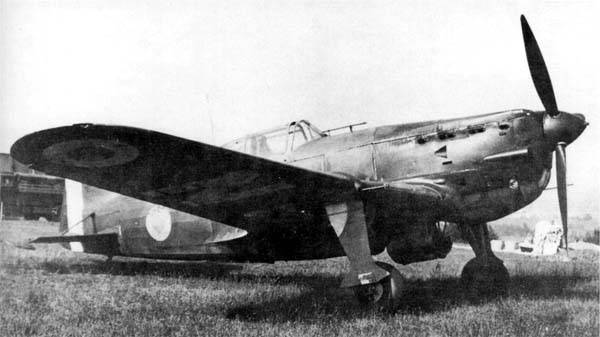
In general, I would ascertain the fact that having a good development, the French were categorically late for production. Yes, and constantly lacking ... right, engines!
The 1938 year is the year when the French government began to have problems with Marc Birkigt, the founder of the Spanish-Suiza. The French government began the nationalization of the entire aviation industry and Birkigt rushed back to Switzerland, which caused many problems for the French Air Force.
But we already wrote about this: About Birkigte and "Spanish Suite"
It got to the point that licensed Spanish-Suisas began to be purchased where they were licensed. For example, it was possible to negotiate with the Czechoslovakians, where the “Spanish-Suizu” was produced at the Avia plants. They ordered a lot, but received only 80 pieces, after which Czechoslovakia was gone.
By the way, they tried to buy M-100A motors in the USSR, which were just “Spanish-Suisas”, licensed, but the Russians turned their fingers around their temple and did not sell the motors.
Therefore, MS.406 was produced both slowly and unevenly. There were other problems with the completion of finished machines.
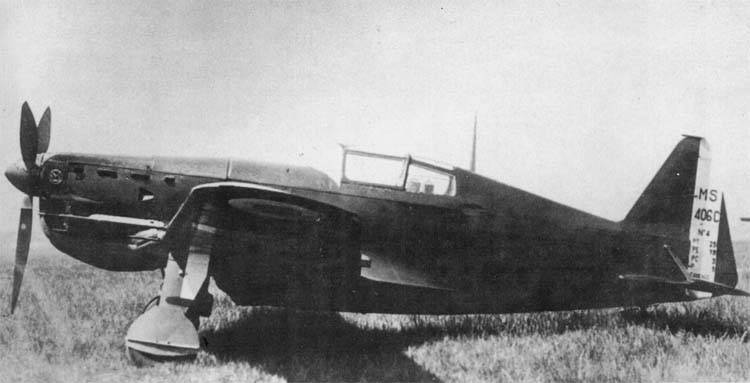
Oddly enough, but the plane "went" with the pilots. The car was available even to a not very experienced pilot, forgave a lot. Low wing loading provided good horizontal maneuverability and acceptable landing speed.
But there were also negative points. Pilots noted insufficient engine power. Moreover, due to overheating of the engine, it was difficult to operate at maximum conditions. The radiator system played a role, which did not close the blinds, but was pulled into the fuselage. To get a speed of the order of 450 km / h, it was necessary to retract the radiator, improving aerodynamics, but the motor was overheating. A kind of vicious circle.
The machine guns, which did not have heating, quietly froze in the wings at an altitude of more than 4 thousand meters. This was written by Saint-Exupery. The ammunition supply of the machine guns was depressingly small, in addition, it was extremely difficult to get to the store.
Well, the lack of armor was not encouraging. So much so that in the combat units they began to independently equip the aircraft with armored backs from old fighters.
The first MS.406 fell into military service in North Africa, but their European fighters really went into battle. By September 1939, when Germany attacked France, its Air Force totaled 557 units of MS.406.
And though not often, but during the “Strange War” battles took place with the Germans, in which it became possible to understand the combat value of MS.406 as a fighter.
It is clear that the main opponent for MS.406 was Messerschmitt Bf.109E. The German was superior to the Frenchman both in speed (at 75-80 km / h) and in rate of climb. And with the weapons, the 109 was much better: one 20-mm gun more.
The Frenchman seemed to have better ammunition: the HS 404 was equipped with 60 shells, and the MG-FF at Messerschmitt was equipped with 15 in the carob store or 30 in the drum store. But the German fired twice as many shells per second, so this is not so in general and an advantage in practice.
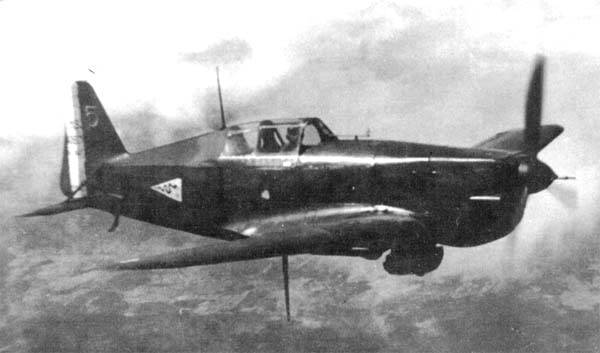
There were pluses. MS.406 had a smaller turning radius, which allowed us to successfully fight on the horizontal, but the war has already shown that the horizontal is a passing one. So, realizing their advantage on the vertical, the Germans very successfully shot down MS.406.
For the “strange war” the French Air Force lost not so many planes (less than 20), but it became clear that a real war would begin - and the losses would be much more serious.
It was necessary to replace MS.406 with something that really could resist German fighters (the same Devatin D.520 or Bloch MB.151), but alas, the French military department was so unable to adequately respond to the situation ...
It came to the ridiculous: as a fighter MS.406 was not able to fight with the bombers! Yes, the Frenchman still somehow managed with slow Ju-87В and Non-111, but Do-17Z and Ju-88 easily left.
It seems that there was an option, and it has been since the 1937 of the year when the Moran-Solne proposed the Air Force project MS.540, actually the same MS.405, but with a metal semi-monocoque fuselage, a slightly modified wing and reinforced weapons (gun and four machine guns) .
However, the engine remained the same old 12Ycrs, and even while testing it accelerated the aircraft to 557 km / h, MS.406 could not save anything.
And the Air Force chose Devuatin D.520. They didn’t give up at Moran-Solne, and prepared two more MS.406 modernization projects, under the names MS.409 and MS.410.
The first one was to install a radiator from MS.406 on MS.540. The second one involved not only replacing the radiator, but also modernizing the wing with the deployment of four MAC 1934 M39 machine guns with tape power and ammunition up to 500 rounds per barrel. The machine guns were equipped with heating and a new electropneumatic system. Plus, new aerodynamic improvements gave an increase in speed at 30-50 km / h.
The Air Force considered the work successful and ordered 500 vehicles. But the beginning of the German offensive put an end to all ambitions and a real war began.
Some of the changes planned for MS.410 were implemented on the latest MS.406 series released in the same year, or on earlier machines directly at the front. This is a new scope and an increased armor plate. At field airfields, a heating system for machine guns and a cabin with exhaust gases, and rear-view mirrors were mounted.
It was clear to everyone that these were half measures, but it was necessary to fight at least with such machines, so production and modernization continued.
Only in March 1940, when it was possible to build the D.520 assembly and expand the production of MB.151 and MB.152, did MS.406 finally be discontinued.
Through the efforts of French officials from the Ministry of Defense, MS.406 became the champion in terms of mass among French fighters: along with MS.405, they built 1098 pieces.
This aircraft continued to be the main fighter of the French Air Force in May, when the Germans went on the offensive. At that time, there were about 800 MS.406 in combat units and reserves, and 135 were also based in the colonies. In total, on May 1 there were 1070 MS.405 and MS.406 fighters.
How did MS.406 fight?
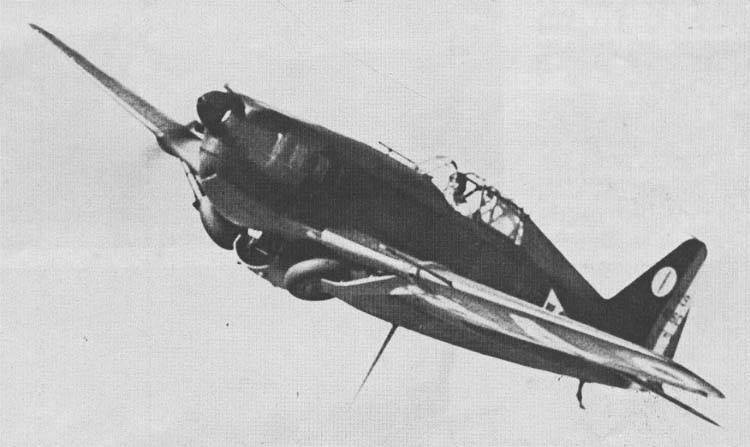
In total, the Morans shot down about a third of the planes lost by the Germans in the French campaign. But this is more due to the number than because of the high level of the machine. Plus, the maneuverability of the car helped a little.
The fact that the list of aces of the French Air Force contains only two pilots who fought on MS.406 (Le Gloan and Le Nigen with 11 confirmed and two unconfirmed victories for each), says a lot.
And the bulk of MS.406 was lost when some of the staff came up with the golden idea of using fighter aircraft as attack aircraft. The effectiveness of MS.406, which did not have a bomb suspension and outstanding weapons, was low in that capacity, and the losses were significant.
Achieved successes generally cost MS.406 a lot. Around 150 MS.406 was shot down and about 100 lost on the ground. Especially many planes died on the ground during the massive German raids on 10 in May.
However, the fact that of all the French fighters MS.406 firmly held the championship in relative losses. One downed MS.406 accounted for 2,5 enemy aircraft.
After the surrender of France, MS.406 fought in North Africa, Syria, French Indochina (Cambodia), Lebanon, and Madagascar. Basically, their fate was to die in battles with the British Air Force, which actively mastered the former French colonies.
MS.406 also fought as part of the Finnish and Croatian Air Force on the side of Germany. In addition, MS.406 ended up in the Turkish, Finnish and Bulgarian Air Force.
In Switzerland, they established their own production under license. The plane had the same 12Y31 engine with a retractable radiator, but was distinguished by equipment and armament (two Swiss 7,49 mm machine guns with tape power in the wings). The aircraft was produced under the brand D-3800 and D-3801.
What can be said as an epitaph? It is worth agreeing that MS.406 was a very good airplane. At the time when it was designed. 1935 year.
But the frankly long deployment of production and the lack of normal modernization work on the machine nullified all the positive aspects.
MS.406 turned out to be an airplane with no perspective, and in any case, it would have to be changed at the very turn of the 1940 of the year. But the situation so happened that the plane was unable to seriously confront the more modern German and British (in the colonies) aircraft.
But since it was released quite a lot, then MS.406 was forced to go into battle. Comparable to the Soviet I-16, no matter how it looks.
LTX MS.406
Wingspan, m: 10,61
Length, m: 8,13
Height, m: 2,71
Wing area, м2: 17,10
Weight, kg
- empty aircraft: 1893
- normal takeoff: 2470
Engine: 1 x Hispano-Suiza 12Y 31 x 860 hp
Maximum speed km / h: 486
Cruising speed, km / h: 320
Practical range, km: 900
Speed, m / min: 667
Practical ceiling, m: 9850
Armament: one 20-mm gun HS-404 and two 7,5-mm machine gun MAC 34.
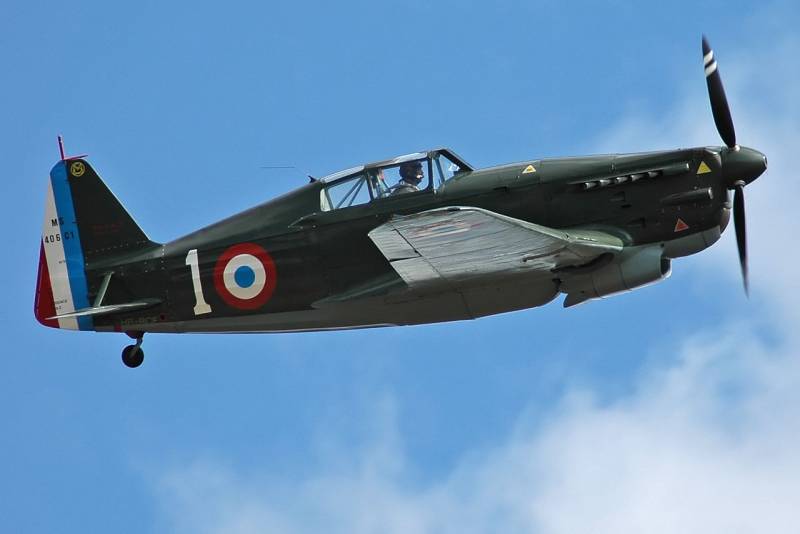
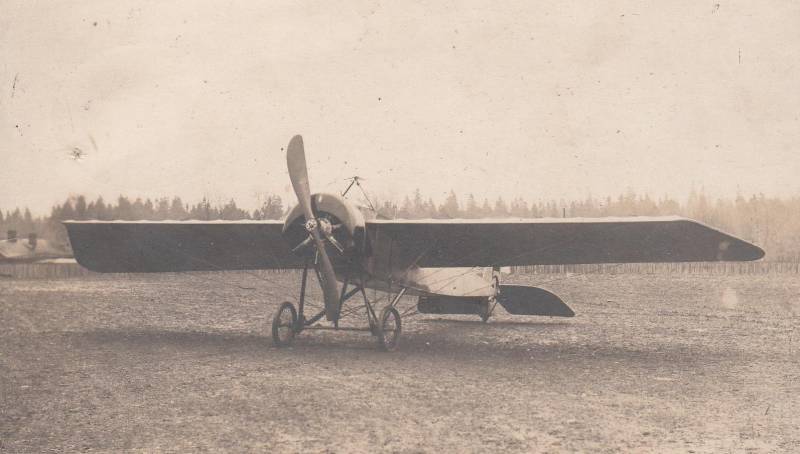
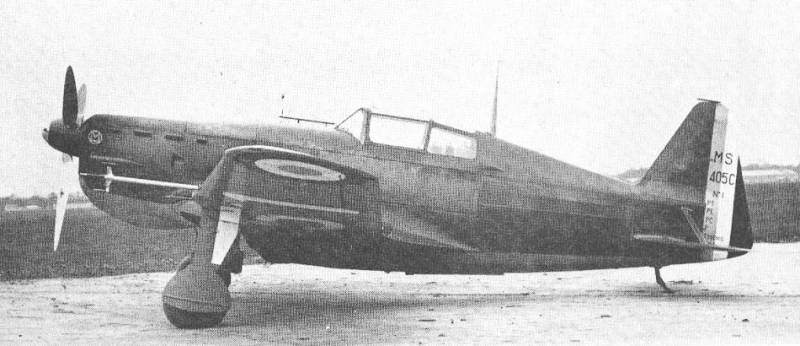
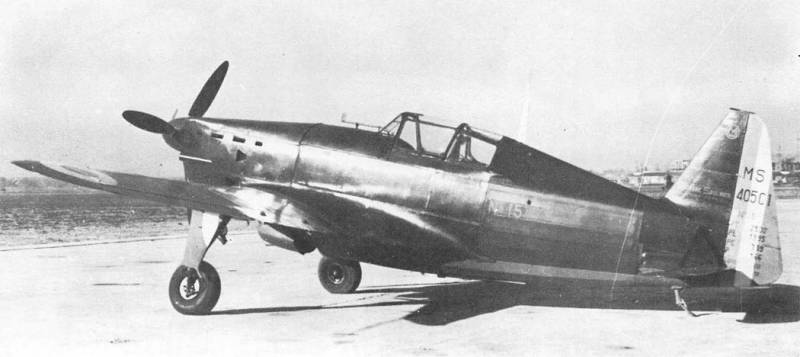
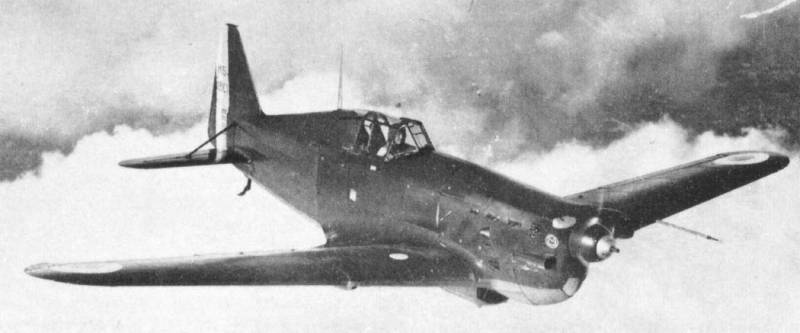
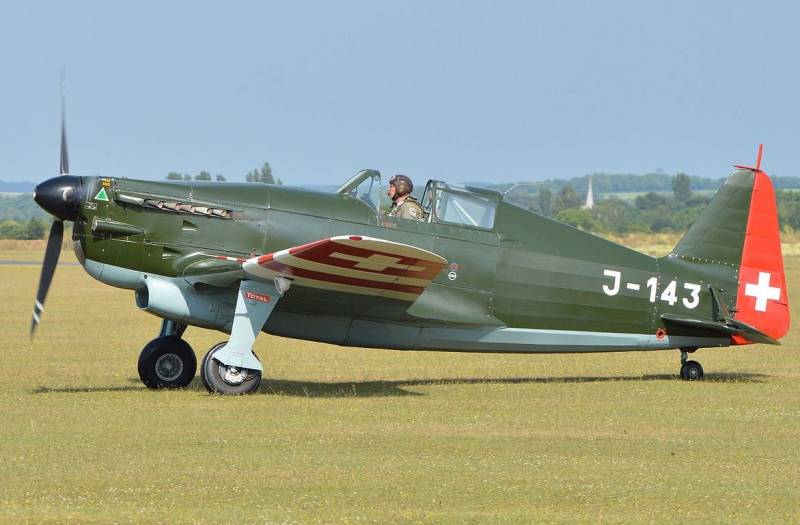
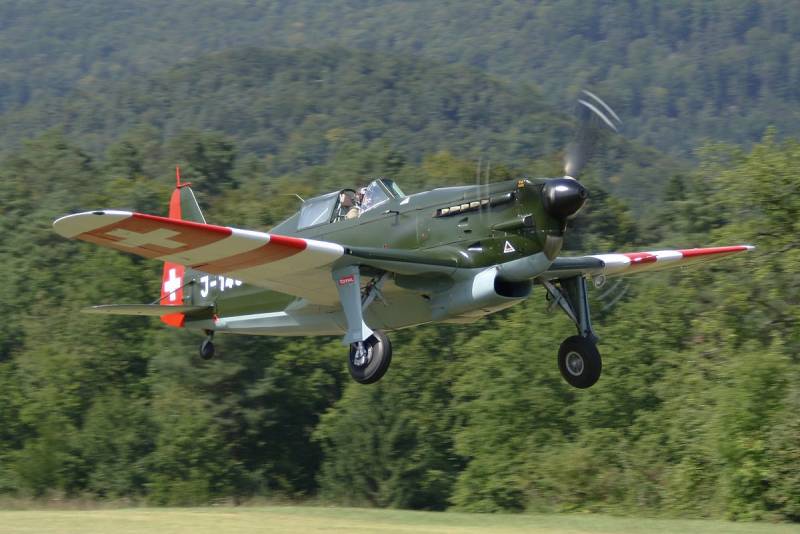
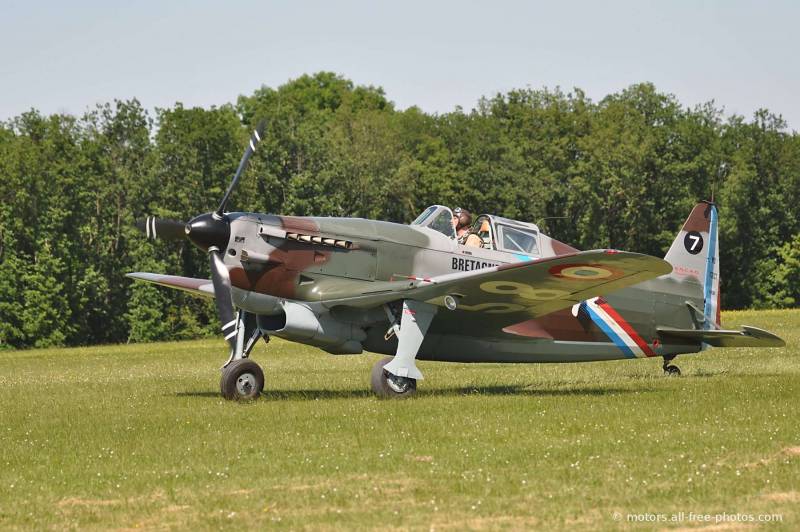
Information